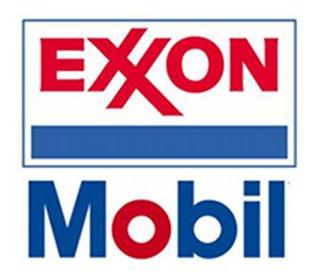By Butch Swank
In my last article, I shared the “how” and “why” behind the recent spike of homeowners insurance prices. I want to let you know that you are not powerless in the current situation. When you’re done reading this, you will have a better understanding of the parts of your home affecting insurance premiums.
If you are in a new home, the odds are good that you have not heard of a Four Point Inspection. That’s because they are usually reserved for older houses. The Four Point got its name from the four areas of the house most likely to generate a claim. They are the roof, air conditioning, plumbing and electrical systems. All these systems have predictable lifespans, so if you’re in a house over thirty with none of these items upgraded – a claim is not an “if”, but a “when”.
For those in a new home, or one less than ten years old, I offer a few key areas to place your focus. The first is to know you can get a credit by providing a certificate from your alarm company if it is monitored. Another easy step is to know that insurance carriers will give you credit if the company that built your home is on their preferred builder list. (These lists are longer than you’d think. It does not need to be a million-dollar home builder.) We often get asked about adding storm shutters. In my experience, they add curb appeal but rarely reduce your rate. To get a reduced rate, you would also need to upgrade or add hurricane-rated garage doors, entry doors, windows, vents, and skylights to qualify. To my math at least, it’ll take a long time to recoup your costs. Gated and/or guarded communities receive discounts so, if that’s you, be sure that box is checked on your policy. The final offering is to ask your agent about insuring your home and auto together. It doesn’t always work out with the same carrier, however. The good news is that companies, like Tower Hill and Safeco for example, have partnered together in Florida to offer generous multi-policy discounts despite being different companies.
Now back to the Four Point Inspections for the older houses. We’ll start with the electrical system because it’s often the easiest and least expensive to fix. The primary concern is breaker boxes because in the past, some were fire-prone. If you have one made by one of these manufacturers, it’s a good idea to consider replacing it: Federal Pacific, Zinsco, Challenger/Sylvania, Stablock or Challenger. Premiums can skyrocket when the inspection comes back with one of these checked.
Next up is plumbing. Water damage accounts for roughly twenty five percent of claims. If your house is over thirty years old, you likely have limited water damage coverage because it is assumed a loss is coming — think of it as a watery combination of Murphy’s Law and Newton’s Second Law of Thermodynamics (stuff breaks as time passes). There are carriers that will allow you to buy back full water coverage, but the price is steep. Having your whole house re-plumbed can be less expensive than you would think. Clients have shared that plumbers have new and, quite frankly, very cool ways to get this job done. Speak with your insurance agent to weigh the various costs and coverages. Ask: “What does the premium do when we try it with new versus old plumbing? Do I have full or limited water coverage?” The bottom line here is that old plumbing can be costly and/or result in greatly reduced coverage.
Air conditioning is what makes Florida go round. It’s what makes us sigh with relief when walking from the 95-degree, 95% humidity outdoors to the 72-degree, 50% humidity indoors. Ahhhh… On the other hand, it can also cause fires, leaks, and, when not working properly, contribute to mold growth. Our houses need air conditioning to remove water from the air. It makes them comfortable for us and uncomfortable for mold. A very old A/C unit will also likely cause your house to be uninsurable by certain carriers. With less options to choose from, you are likely to pay more each year for insurance.
Our final of the Four Points is the roof. Even without hurricanes our poor roofs take phenomenal abuse from the sun’s UV rays. They suffer from wear and tear like all things left outside. Hurricane Andrew was a wake-up call for Florida to come up with uniform standards on how roofs were made and installed. After 2002, all roofs had to meet the new Florida Building Code which resulted in much-improved performance during storms. Despite this, they are also still one of the costliest items of a house to replace. Therefore, the newer your roof, the less expensive it is to insure. I understand that is counter-intuitive, but bear with me. As the Florida Statutes currently stand, if you have a 19-year-old roof that is damaged by a covered peril, your insurance company will pay the price for a brand new roof. There is no allowance for depreciation, so as the roof ages, it is more vulnerable to damage which means your insurance costs will go up as the risk goes up. In short, an old roof is an expensive roof. One other point I’d like to add is that metal roofs, while initially a bit more expensive than shingle, seem to fare better in storms and enjoy a much longer life expectancy. That means you should expect to enjoy lower premiums over a longer period.
Deductibles also affect premium, but that will have to wait for another article. It’s a complex topic requiring more space to explore. The bottom line is that you and your house are unique, and I encourage you to communicate with your agent. Good communication allows a back and forth so you can go over all the topics we’ve reviewed. If you’re having trouble with them getting back to you, please understand many Florida carriers have dropped long-time agencies and now greatly limit what agencies can write. Your current agent may not have as many options available as they did a few years ago. Our agency has over 30 home carriers. That allows our clients to shop and compare many options in price and coverage options. Having as many carriers as we do allows us to be in a great place to help if you need it. Call anytime (239) 674-7630.








